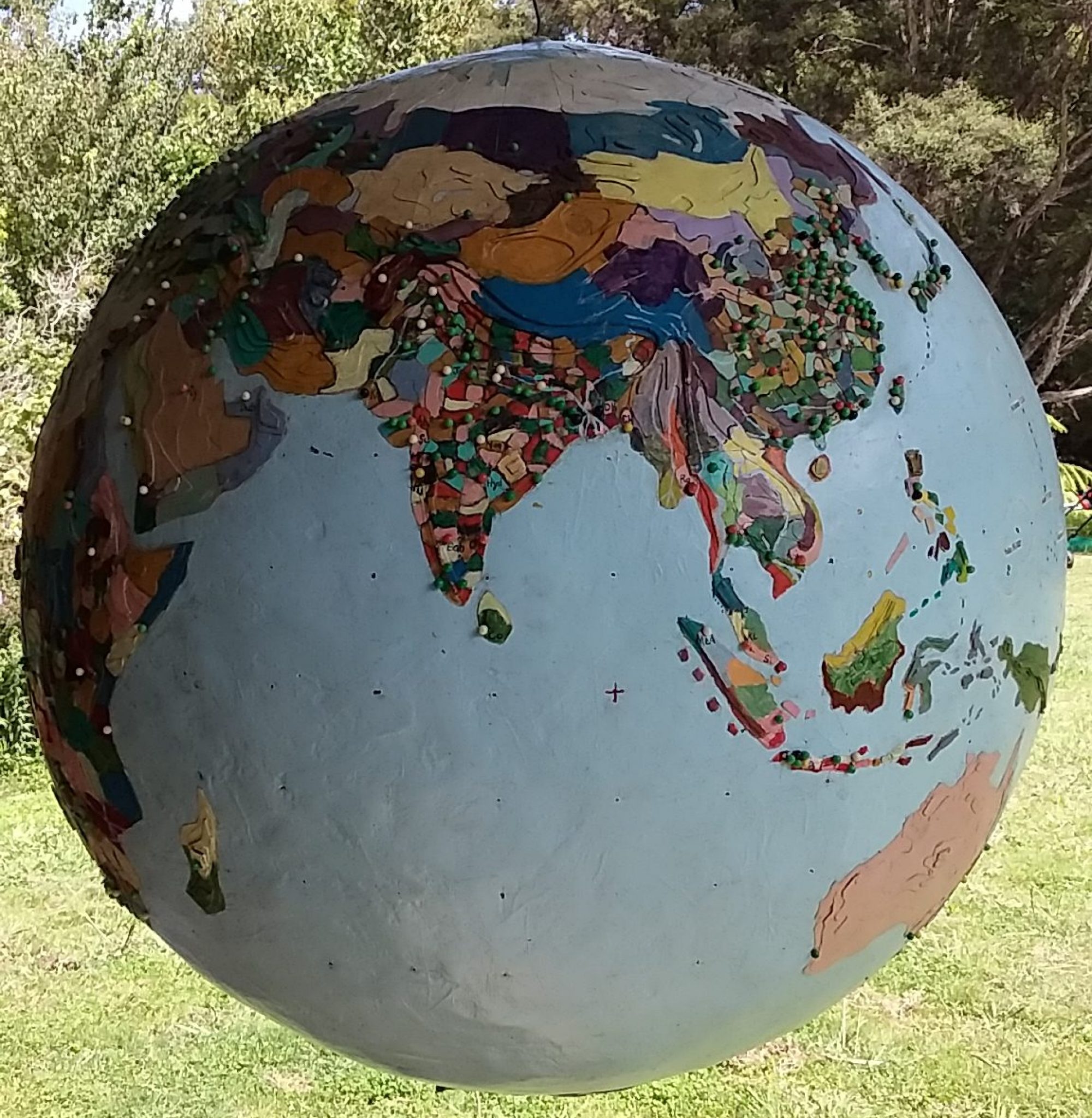Millisphere, noun: A discrete region inhabited by one-thousandth of the total world population. around 7 million people, but anywhere between 3.5 and 14 million people. A lens to examine human geography.
The continent of Africa (population 1.2 billion) consists of about 170 millispheres. Sitting at the south-western tip of South Africa (population 55 million) is the former Cape Province (2016 population just under 14 million).
Roughly equating to the region where the Afrikaans language is spoken, the pre-apartheit Cape Province population was 6.7 million in 1967 and the population has doubled in the past 50 years.
The Afrikaner population goes back to when the Dutch East India Company (VOC) established a warehouse/garden there in 1650 to restock its ships heading to and from the Indies.
It was the Portuguese who called it the Cape of Good Hope 150 years earlier — because it meant turning back to the tropics. Some of the oldest cave paintings in the world are at Blombos near Cape Town, going back 77,000 years to the San Bushmen.
The “Cape Coloureds” of Cape Town go back to the 17th century and the mixed races of the Dutch and their slaves, both Black and Malay.
Occupied by Great Britain during the Napoleonic Wars, Cape Town (population 3.7 million) is a modern multicultural city, with sizeable Indian and Malay communities. In South Africa, post-apartheid, poverty among whites increased and many blacks rose to the middle and upper classes. The South African population is 80 per cent black, 9 per cent white (down from 22 per cent a century ago), 9 per cent coloured and 2.5 per cent Asian, and there has been an influx of 5 million refugees from Africa.
The old Cape Province can be further divided into its modern post-apartheit provinces: Western Cape, 5.8m (Cape Town), Eastern Cape, 6.5m (Port Elizabeth, East London) and Northern Cape, 1.1m, (draining north into the Orange River).
The watersheds of Eastern and Western Cape drain south to where the Atlantic meets the Indian Ocean and both qualify as millispheres.
Eastern and Western Cape have interesting biogeographies because of an ancient chunk of Gondwanaland fusing with the African continent back in prehistory.
The cape floral kingdom is a biodiversity hot spot and is one of the worst areas in the world for the invasion of foreign weed species, including NZ pohutukawa and flax.
In the summer of 2018 Capetown can very close to running completely out to water.
South Africa has no “capital”. The Parliament is in Cape Town; the president and the administration are in Pretoria, as are the foreign embassies; Bloemfontein is the judicial centre and Johannesburg has the constitutional court (and serious crime).
South Africa was the first country to “renounce” nuclear weapons and it has the second highest murder rate in the world and the world’s highest rape rate.
A girl in South Africa is more likely to be raped than to complete secondary school and there are seven million South Africans with Aids.
South Africa’s solution to crime has been “gated communities”.
The private security industry is the largest in the world, with 400,000 registered guards — more than the police and army combined. Private security even guard the police stations so the poorly paid and ineffective police can do their “work”.
More than half of crime is unreported and violence is generally reasoned “OK” to resolve conflict.
The country is 80 per cent Christian, although 60 per cent of blacks consult “healers” and follow African spirit and ancestor beliefs.
Known for its gold mines, Johannesburg was once known as “Jewburg”. There were 120,000 South African Jews in the 1960s; now there are 67,000, many “returning” to Israel, where they have congregated in one of the richest suburbs in Israel.
Recently a white South African was granted asylum in Canada on the argument that whites were disproportionately affected by crime.
While those most affected by “crime” are actually the poor blacks, the murder rate for white farmers is around three times the South African average.
In the 1980s one SA rand was worth one US dollar, now it is 15 rand to the dollar.
While kleptomaniac Jacob Zuma continues to cling on to the South African Presidency, recently Cyril Ramaphosa, from the mine workers’ union, who is seen as the “least corrupt of a corrupt bunch”, has replaced him as president of the ANC, the country’s ruling party.
